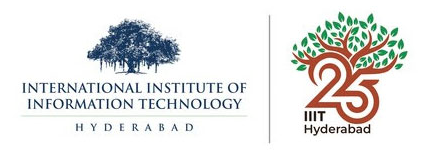

The IAStructE – IIIT Hyderabad student chapter of the Earthquake Engineering Research Centre organized an expert lecture on 3rd March 2025, titled “Fundamentals on the Design of Tall Buildings”, delivered by Dr. Najeeb Shariff Mohammad, Assistant Professor, Dept. of Civil Engineering, IIT Bombay. The session provided an insightful understanding of the principles, challenges, and innovations involved in designing high-rise structures, with a focus on safety, stability, and functionality. Dr. Shariff explained that the need for tall buildings is driven primarily by urban constraints, especially in cities with limited land availability necessitating the design of vertical structures to maximize space usage. The complexity of designing tall buildings, particularly due to their slenderness, was emphasized. The importance of ensuring stability against environmental forces such as wind and seismic activity was also explored. Various solutions for structural stability to enhance structural performance were discussed, including frame systems, shear walls, advanced tube-in-tube and outrigger systems, large columns, and damping systems. Advanced technologies like tuned liquid dampers, aeroelastic design, and vortex shedding control. The application of nature-based designs inspired by bamboo was also highlighted. These designs help optimize load distribution while reducing material usage, enhancing both structural efficiency and sustainability. The speaker highlighted the logistical challenges in high-rise construction, including precise alignment of structural elements and material transportation. Innovative techniques like slip-forming, jump-forming, and modular prefabrication enable faster, more efficient construction while ensuring precision.
The discussion also covered time-dependent effects on tall buildings. Differential axial shortening, caused by creep, shrinkage, and relaxation, is also highlighted, which can impact structural integrity. A key consideration in the design of tall buildings is the choice of materials. Dr. Shariff mentioned that while steel offers advantages in terms of lightweight flexibility and speed of construction, concrete provides superior damping and fire resistance. Many modern skyscrapers employ a hybrid structural system to combine the best attributes of both materials. He also highlighted the use of emerging materials such as graphene-enhanced concrete, carbon fibre composites, and 3D-printed structural elements as potential future trends in high-rise construction and discussed the relevant codes and standards used for high-rise design. The lecture concluded with a focus on seismic design, stressing the importance of robustness and resilience to ensure safety during earthquakes. The use of flexible structural systems and base isolators was discussed as essential features for earthquake resistance. The session also highlighted the importance of effective vertical transportation systems and fire safety measures, alongside strategies to mitigate fire hazards in the case of tall buildings. The session wrapped up with an engaging Q&A, where participants asked questions on aerodynamic optimization, foundation selection based on soil conditions, fire safety measures, earthquake-resistant features, etc. Overall, the lecture was a great learning experience, offering a deep understanding of tall buildings in a way that was easy to grasp. Dr. Shariff’s engaging approach, real-world examples with animations, and explanation kept the audience deeply engaged throughout the session making it an informative and insightful event. The discussion on advanced construction techniques, sustainability, and future trends in high-rise building engineering further enriched the session, leaving participants with valuable insights into the evolving world of skyscraper design.

Visitors Count